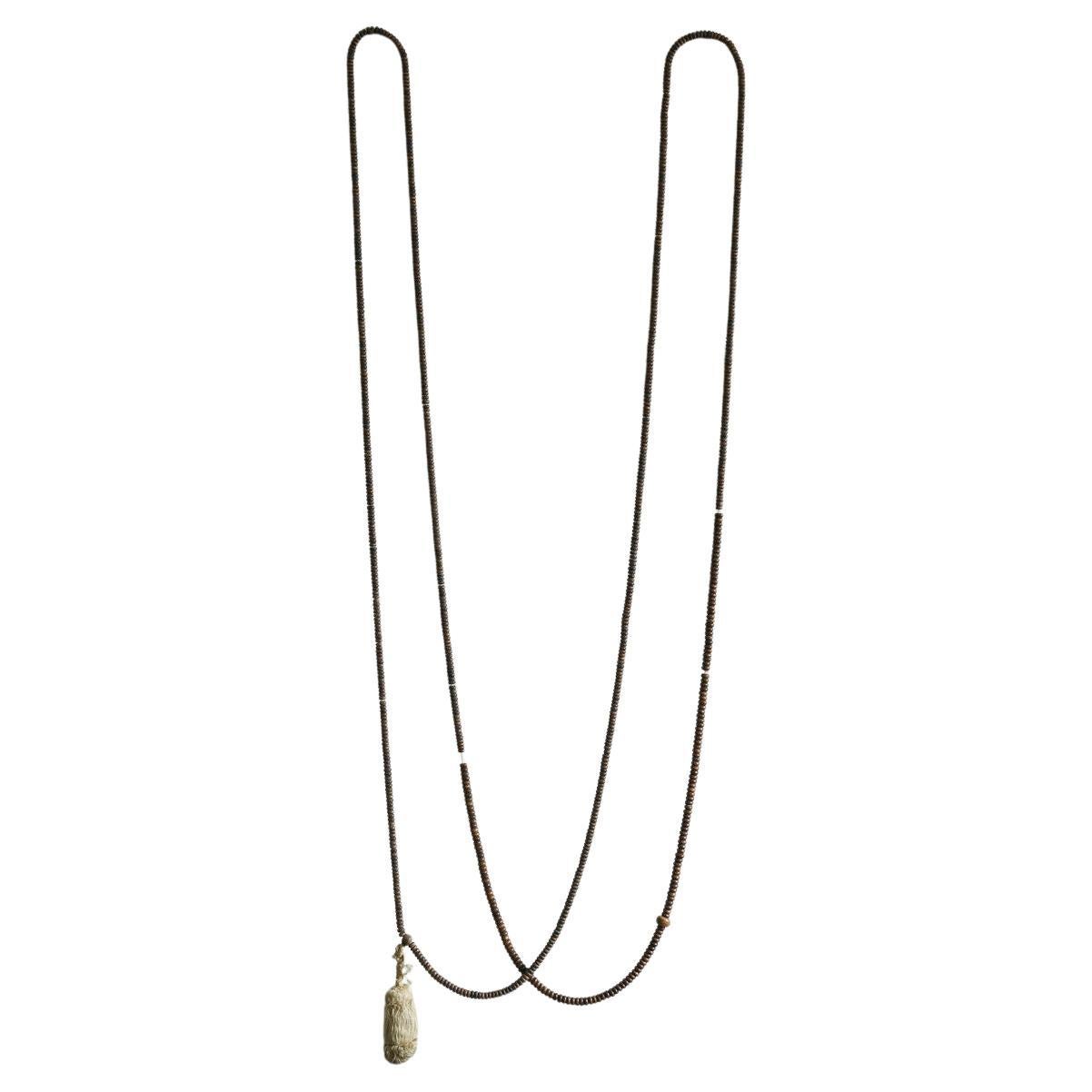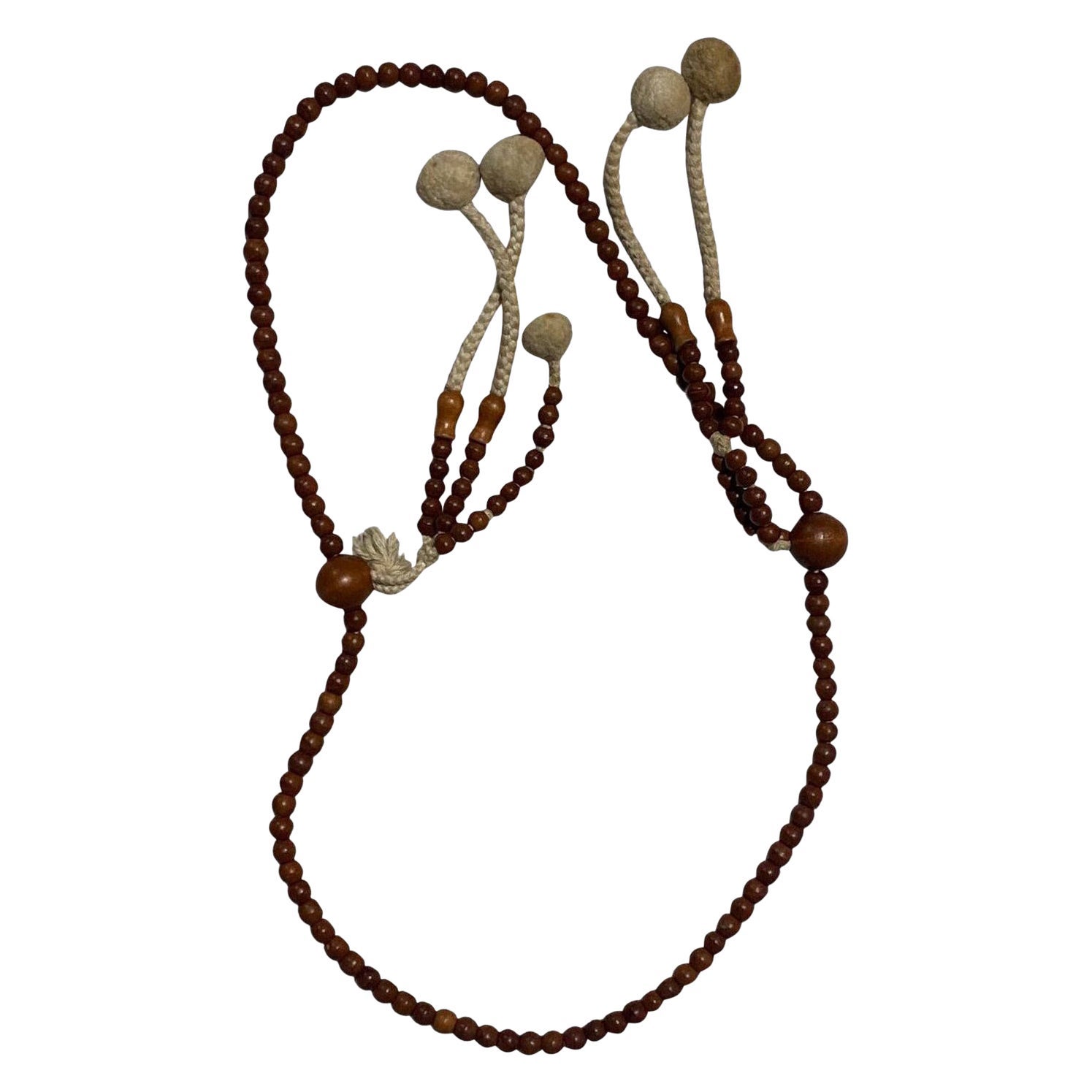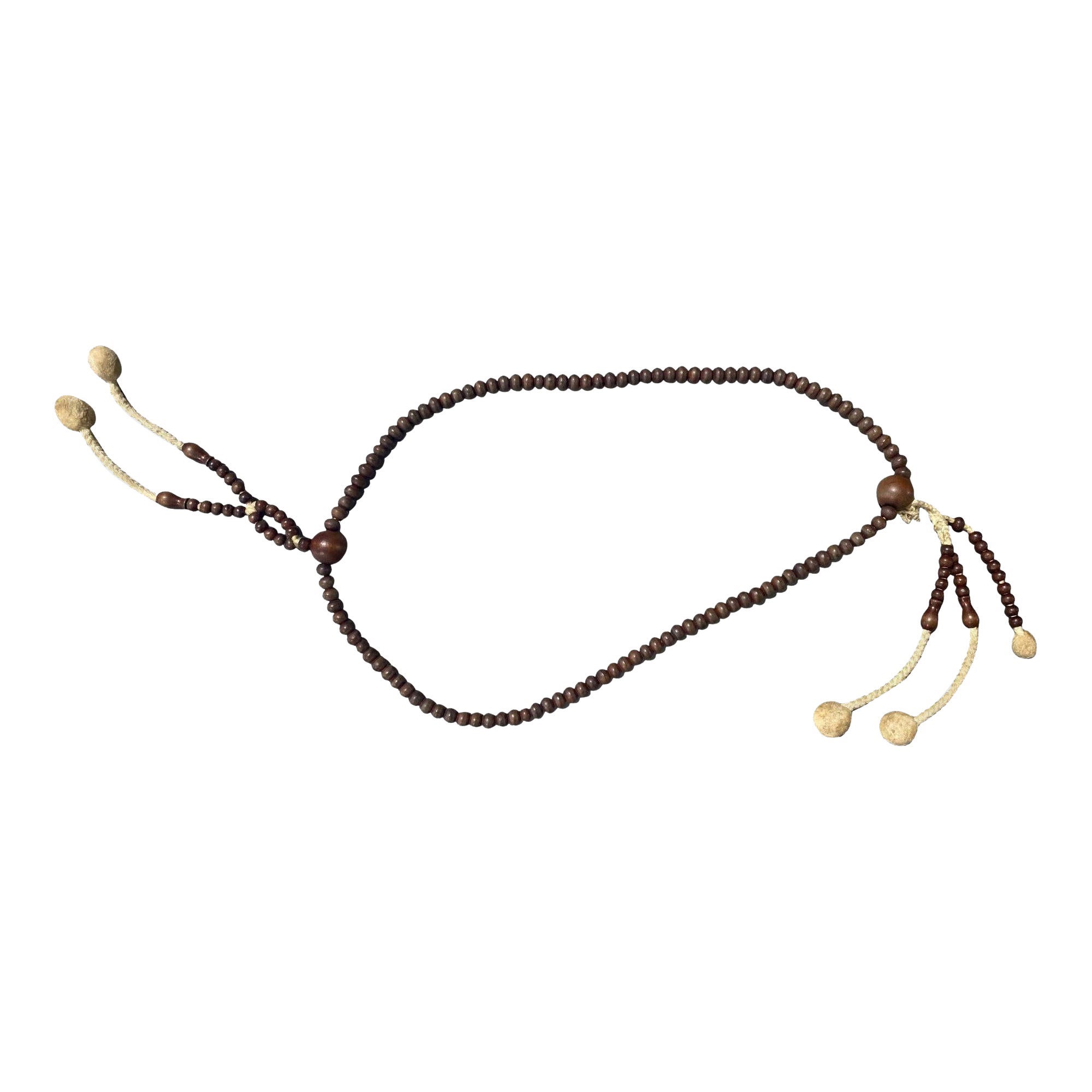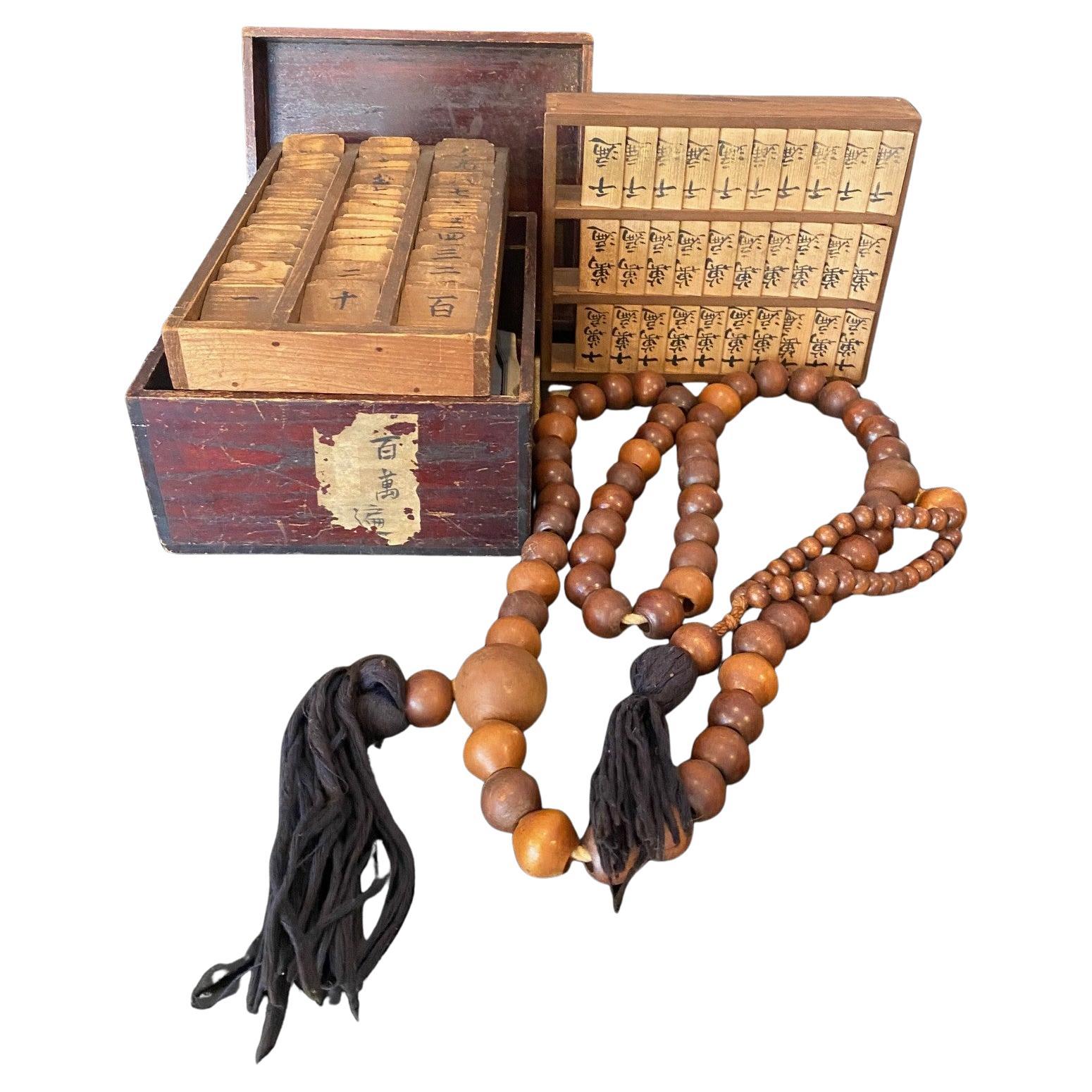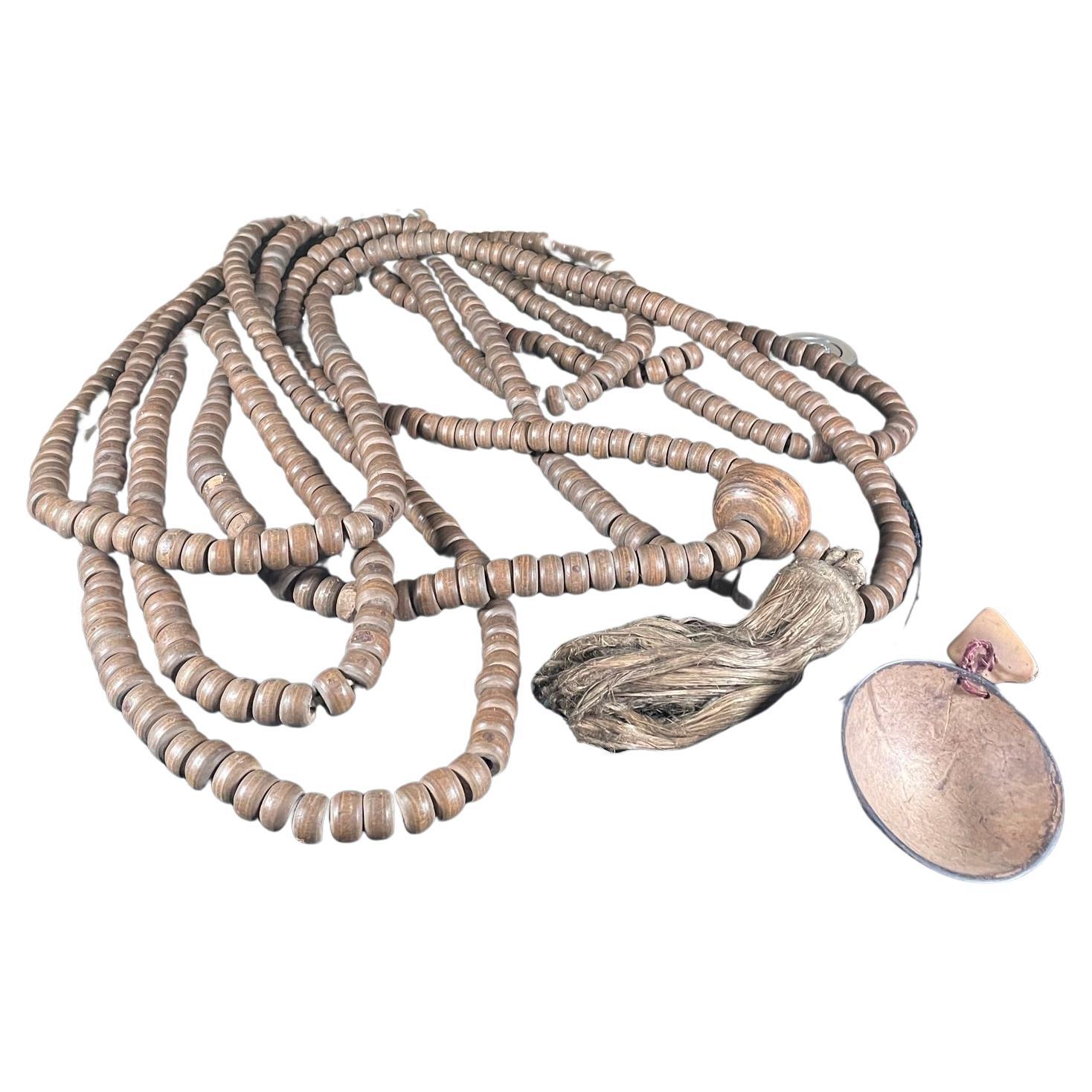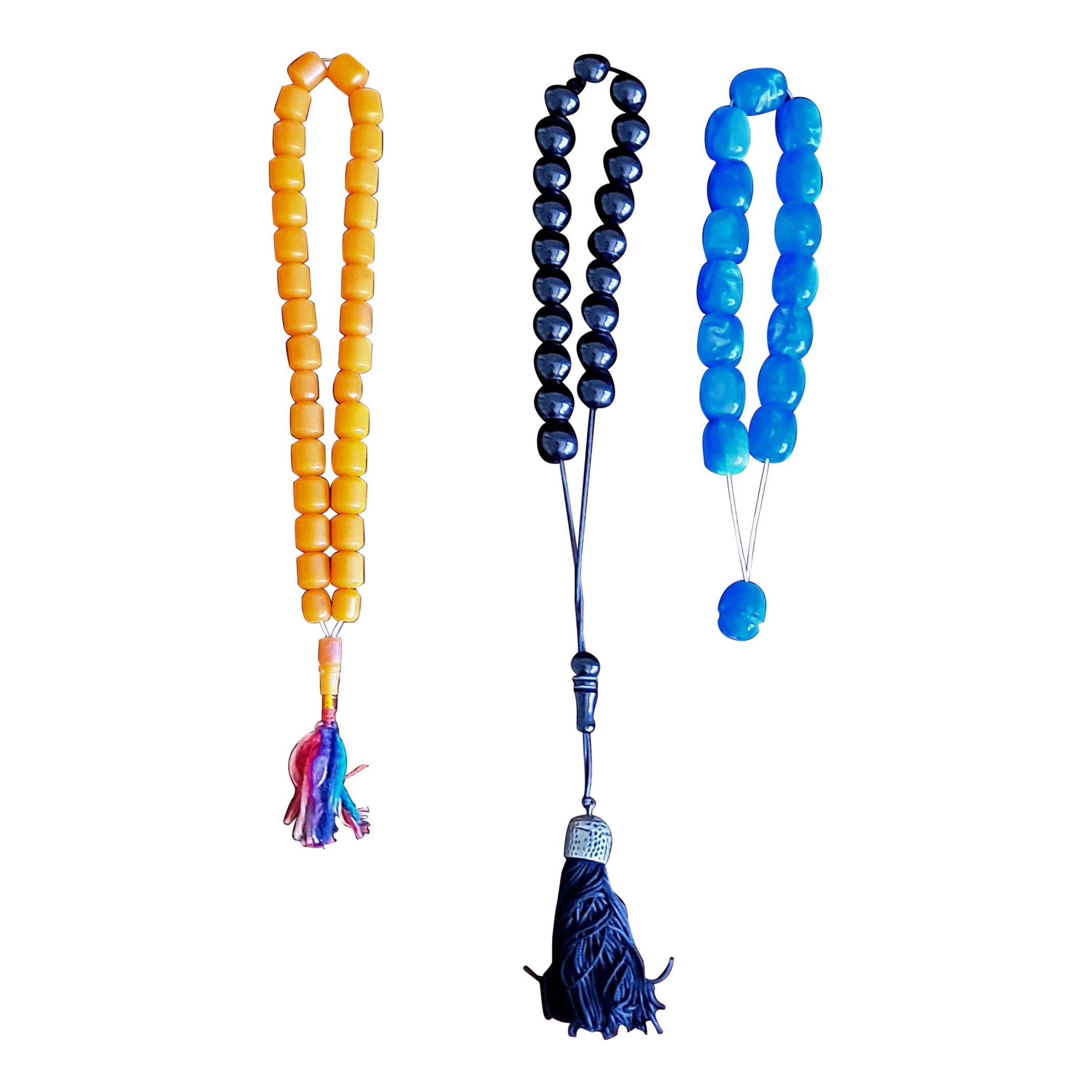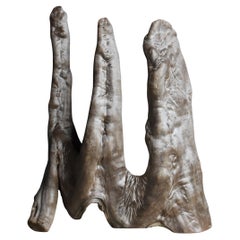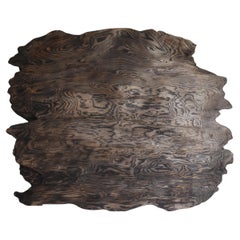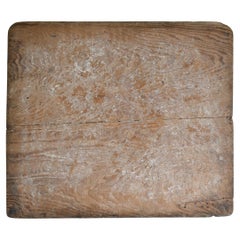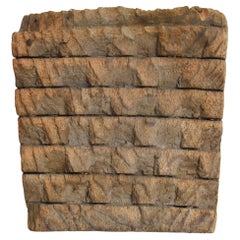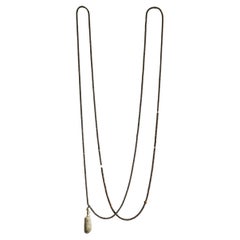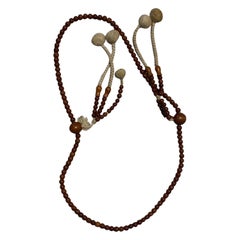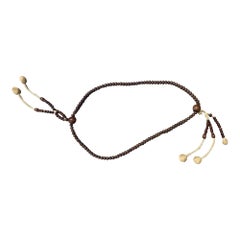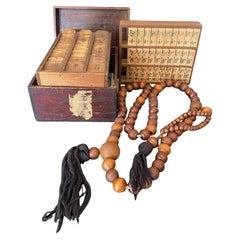Items Similar to Japanese Antique Hyakumanben Buddhist Prayer Beads 1830s-1844s / Zen Wabisabi
Want more images or videos?
Request additional images or videos from the seller
1 of 18
Japanese Antique Hyakumanben Buddhist Prayer Beads 1830s-1844s / Zen Wabisabi
$2,500
£1,898.45
€2,194.50
CA$3,513.51
A$3,912.29
CHF 2,068.91
MX$47,610.20
NOK 26,079.09
SEK 24,570.33
DKK 16,378.13
About the Item
This is an antique Japanese Hyakumamben (Buddhist) prayer bead set.
A Hyakumamben is a large ceremonial rosary used in Buddhist prayer services, where many monks and worshippers form a circle and pass the beads around while chanting the Nembutsu. True to its name, it embodies the wish to recite the prayer “one million times,” serving as a sacred ritual implement that gives physical form to prayer.
One of the large beads is inscribed with the characters “天保” — the Japanese era name corresponding to the Edo period (1830–1844). This indicates that the piece was made during that time, making it a work of high historical value, crafted over 180 years ago.
The set is composed of 352 beads in total: 350 small beads and 2 large beads. The material appears to be lightweight, soft paulownia wood, with each bead hand-carved. While uniform at first glance, each bead retains subtle differences in shape and tool marks, revealing the warmth of craftsmanship and the texture earned over centuries. Carving such a great number of beads would have required extraordinary patience and skill.
The beads are strung together with a long straw rope, reaching an impressive total length of approximately 6,300 mm. When laid out on the ground, they create an overwhelming presence reminiscent of a ceremonial scene. Even when bundled and hung on a wall, they bring a serene beauty and spiritual depth to the space.
The surface bears a rich patina of deep amber and dark brown, with the soft grain characteristic of paulownia wood occasionally visible. Signs of wear and small scratches remain as evidence of the prayers recited and the touch of countless hands over time. This is a piece that truly embodies the wabi-sabi aesthetic — an iconic expression of Japanese culture.
The small beads measure approximately 30 mm in diameter, while the large beads are about 70 mm.
Weight: 2.5 kg
_______________________________
Our Philosophy
Objects always tell the truth.
All I can do is just to face with them sincerely and give
them deep affection as much as I can.
There is no boundary of nationalities and of eras in beauty.
But I think now is the time we choose 'Japanese style' and it
will be the best way to remind us of what we are losing
today and to question us about an essence of beauty again.
I hope that you can touch the memories which the objects here have,
feel and think of something invisible but exists undoubtedly.
- Dimensions:Height: 48.43 in (123 cm)Width: 9.85 in (25 cm)Depth: 7.49 in (19 cm)
- Style:Edo (Of the Period)
- Materials and Techniques:
- Place of Origin:
- Period:
- Date of Manufacture:1830s-1844s
- Condition:Wear consistent with age and use.
- Seller Location:Chōsei District Nagara, JP
- Reference Number:1stDibs: LU10403246208902
About the Seller
New to 1stDibs
Joined in the past six months.
5.0
Platinum Seller
Premium sellers with a 4.7+ rating and 24-hour response times
Established in 2017
1stDibs seller since 2025
22 sales on 1stDibs
Typical response time: 2 hours
- ShippingRetrieving quote...Shipping from: Chōsei District Nagara, Japan
- Return Policy
Authenticity Guarantee
In the unlikely event there’s an issue with an item’s authenticity, contact us within 1 year for a full refund. DetailsMoney-Back Guarantee
If your item is not as described, is damaged in transit, or does not arrive, contact us within 7 days for a full refund. Details24-Hour Cancellation
You have a 24-hour grace period in which to reconsider your purchase, with no questions asked.Vetted Professional Sellers
Our world-class sellers must adhere to strict standards for service and quality, maintaining the integrity of our listings.Price-Match Guarantee
If you find that a seller listed the same item for a lower price elsewhere, we’ll match it.Trusted Global Delivery
Our best-in-class carrier network provides specialized shipping options worldwide, including custom delivery.More From This Seller
View AllJapanese Antique Natural Wood Object 1900s-1940s / Wabisabi
Located in Chōsei District Nagara, JP
Believe it or not, this is actually a tree.
This is a natural pine tree object that makes use of the form created by nature as it is.
It is estimated to have been collected in the mo...
Category
Mid-20th Century Japanese Showa Antiquities
Materials
Pine
Japanese Antique Cedar Wood Board Wall Decoration 1860s-1900s / Wabi Sabi
By Axel Vervoordt
Located in Chōsei District Nagara, JP
This is an old, single-slab board made of Japanese cedar, believed to date back to the Meiji period (1860s–1900s). Cut from the trunk of a large, centuries-old cedar tree, it retains...
Category
Antique Late 19th Century Japanese Primitive Decorative Art
Materials
Cedar
Japanese Antique Wabi-Sabi Wood Board 1860s-1900s / Wall Decoration
Located in Chōsei District Nagara, JP
This is an old Japanese wooden board called “Mochiita” (rice cake board).
It was used during the Meiji period (1860s-1900s) and is made of pine wood with a rich texture.
As the name ...
Category
Early 20th Century Japanese Meiji Decorative Art
Materials
Pine
Japanese Antique Thatching Tools "Gangi" 1860s-1920s / Wall Decoration Wabisabi
Located in Chōsei District Nagara, JP
This is a traditional Japanese thatched roof tool known as a “Gangi.”
A Gangi is used to trim the cut ends of the thatch and smooth the roof’s surface, symbolizing the craftsmanship ...
Category
Early 20th Century Japanese Meiji Antiquities
Materials
Cedar
Japanese Antique Primitive Two-tier Exhibition Stand 1900s-1940s / Wabi Sabi
Located in Chōsei District Nagara, JP
This is a primitive style two-tier display stand made in Japan.
This piece of furniture was made in the Showa period (1900s-1940s) and was boldly carved from a large pine tree.
The ...
Category
Mid-20th Century Japanese Primitive Side Tables
Materials
Pine
Japanese Antique Wood Carving Daruma 1860-1920s / Sculpture Wabi Sabi Mingei
Located in Chōsei District Nagara, JP
This is an old wooden form of Daruma made in Japan.
It is estimated to have been made between the Meiji and Taisho periods (1860s-1920s) and seems to have been made of cedar wood.
De...
Category
Early 20th Century Japanese Meiji Sculptures and Carvings
Materials
Cedar
You May Also Like
Antique Japanese wooden prayer beads / wall hanging object / 1800s
Located in Sammu-shi, Chiba
This is a "Hyakumanben Nenbutsu Juzu" (Hyakumanben Nembutsu Prayer Beads), crafted between the late Edo and Meiji periods (19th century). Hyakumanben Nembutsu Juzu refers to the gian...
Category
Antique 19th Century Japanese Edo Decorative Art
Materials
Wood
Japanese Temple Shrine Buddhist Monk Juzu Prayer Wood Beads Mala Rosary Necklace
Located in Studio City, CA
A beautiful string of Japanese hand-crafted Buddhist Juzu mala beads made of natural wood. These rosary-type prayer bead necklaces were used by Buddhist monks in temple prayers/ritua...
Category
Mid-20th Century Japanese Showa Sculptures and Carvings
Materials
Wood
Japanese Temple Shrine Buddhist Monk Juzu Prayer Wood Beads Mala Rosary Necklace
Located in Studio City, CA
A beautiful string of Japanese hand-crafted Buddhist Juzu mala beads made of natural wood. These rosary-type prayer bead necklaces were used by Buddhist mon...
Category
Mid-20th Century Japanese Showa Sculptures and Carvings
Materials
Wood
Japanese Edo Temple Shrine Buddhist Monk Juzu Prayer Beads Mala Rosary Necklace
Located in Studio City, CA
A very special antique collection - this long strand of Japanese hand-crafted natural wooden (perhaps Rosewood) Buddhist Juzu mala beads with customary larger "Guru" beads. These rosary-type prayer bead necklaces were often used by Buddhist monks in temple rituals and worn by Samurai as amulets of protection.
This particular piece features a wonderful, naturally organic patina acquired over years of handling and use.
Likely originates from the late Edo period (1603-1868) or early Mejia Period (1868-1912).
This juzu bead...
Category
Antique 19th Century Japanese Edo Sculptures and Carvings
Materials
Wood
Japanese Antique Zen Rosewood Mala Prayer Bead String 800 Beads With Alms Bowl
Located in South Burlington, VT
Rare find!: 24 feet long Zen monk Mala Prayer Bead String plus original wooden alms bowl with its original attached triangular shaped stone ojime.
A huge...
Category
Early 20th Century Japanese Meiji Sculptures and Carvings
Materials
Wood
$360 Sale Price / set
58% Off
Antique Greek Prayer Beads Often Referred to as "Komboskini" or "Chotki"
Located in Los Angeles, CA
Antique Greek prayer beads, often referred to as "komboskini" or "chotki," are a form of prayer rope or string used in the Eastern Orthodox Christian tradition for counting prayers ...
Category
Vintage 1930s Greek Balkan Religious Items
Materials
Amethyst
$995 Sale Price / set
39% Off
